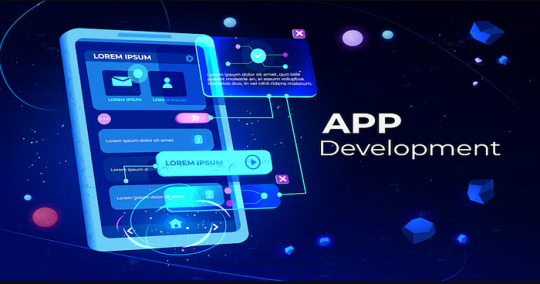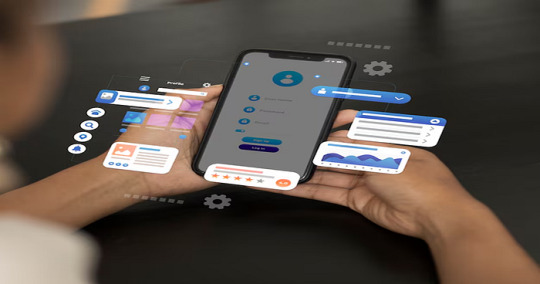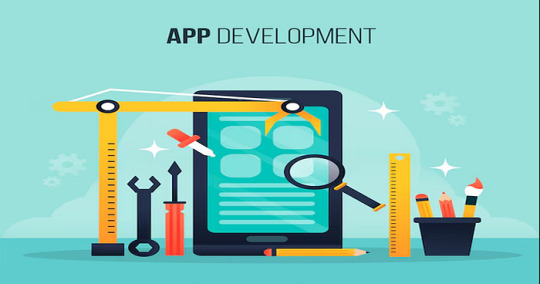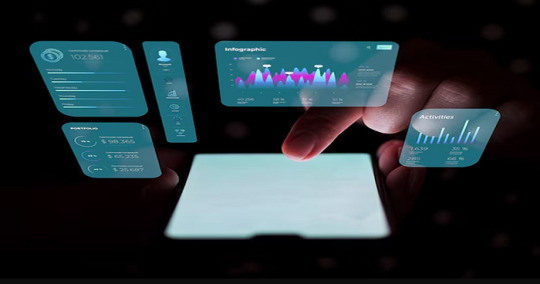#iOS App Testing
Explore tagged Tumblr posts
Text
The Importance of Mobile Testing Services for Flawless App Performance
In the current digital age, mobile applications have become a vital factor in ensuring businesses' success, user engagement, and customer experience. With millions of apps in app stores competing for the user’s attention, making sure that your app works well everywhere, and on different devices, operating systems, and network conditions, is of utmost importance. Mobile testing services can do just that. Employing testing services can ensure that your app has the best user experience, meets quality standards in the industry, and stands out in an already competitive market. In the following blog, we will describe the benefits of mobile testing services, the value and importance of these services, and why companies like GQATTech can help improve your app performance.
Why Mobile Testing Services Are Essential
Mobile apps are available in many different locations and on many user devices, from inexpensive phones to high-end tablets and operating systems, including, but not limited to, iOS and Android. Each mobile device has its own screen sizes, hardware capabilities, and software settings, and maintaining consistent performance is a challenge. There are general mobile testing services available where your app is reviewed in detail to evaluate and solve the defects before it reaches the users.
Here are some reasons why testing a mobile app is important:
Enhanced User Experience: A seamless, bug-free app keeps users engaged and satisfied. Testing ensures smooth navigation, fast load times, and intuitive functionality, reducing user frustration and churn.
Cross-Device Compatibility: With thousands of device models in the market, testing ensures your app works flawlessly across different screen resolutions, hardware specifications, and OS versions.
Improved Performance and Stability: Testing identifies performance bottlenecks, crashes, and memory leaks, ensuring your app runs smoothly even under heavy usage.
Security Assurance: Mobile apps often handle sensitive user data. Rigorous testing uncovers vulnerabilities, protecting your app and users from security breaches.
Faster Time-to-Market: Comprehensive testing streamlines development by catching issues early, reducing costly post-launch fixes, and accelerating release cycles.
Types of Mobile Testing Services
Mobile testing involves multiple facets and a collection of different testing methods to make sure all aspects of the app are optimized. Here is a short overview of the types of mobile testing services of the professionals at GQATTech :
Functional Testing: This makes sure that all elements of the app work exactly as they should, from simple button clicks to a complex workflow, on a variety of devices, and on a variety of platforms.
Usability Testing: This evaluates the user interface and user experience of the app to make sure its look, feel, symmetry, and aesthetics follow an intuitive, user-friendly experience.
Performance testing: This involves testing the speed of the app, the responsiveness of the app, and the stability of the app, primarily due to different conditions, meaning usage in low battery, poor network signal, and amongst many other variables, high user traffic.
Compatibility Testing: This makes sure the app works as intended between the devices, operating systems, browser versions, etc.
Security Testing: This considers vulnerabilities of the app, but also ensures compliance with data protection regulations protecting sensitive user information.
Automated Testing: The use of advanced tools to automatically validate repetitive test cases that may improve efficiency and coverage, for true speed in the testing process.
Localization Testing: Makes sure that the app works in regions and can support multiple languages, currencies, and that there is regional and cultural awareness.
Why Choose GQATTech for Mobile Testing Services?
GQATTech can be your managed services mobile testing partner for your mobile app testing. They provide end-to-end mobile testing to get the highest quality mobile app to your stakeholders. Their services include:
Wide Test Coverage - They include functional testing, performance testing, security testing, usability testing, and they will test all levels of quality for your mobile app.
Customized Mobile Test Strategy - GQATTech will understand your mobile app's specific needs and determine how the testing process needs to be tailored for optimal performance and satisfaction.
Experienced team members - GQATTech's Universal QA team has years of experience and a wealth of knowledge specializing in mobile testing across industry verticals.
Wide Range of Testing Devices - GQATTech has or you can test on almost any real device, or you can use a cloud-based testing service by leveraging the broad range of devices GQATTech has access to.
Agile and DevOps - GQATTech’s managed services solution allows you to integrate managed services with your current development pipeline, so you can get quicker and more accessible education, and faster testing cycles.
When you use GQATTech as your mobile testing partner you can ensure you are putting a quality mobile app in production, which brings considerable trust to the user experience and business.
Conclusion
In a mobile-first world, high-quality apps are essential. Mobile testing services ensure seamless performance, user satisfaction, and market success. Partner with GQATTech for expert testing, advanced tools, and tailored solutions to drive your app’s success. Contact GQATTech today for top-tier mobile testing services!
#Android Testing#iOS App Testing#Cross-Device Testing#Mobile QA#Mobile Automation Testing#App Performance Testing#Real Device Testing#GQATTECH
0 notes
Text
How to Test iOS Apps on Multiple Devices: A Step-by-Step Guide
Introduction: Testing iOS apps on multiple devices ensures compatibility across different screen sizes, OS versions, and hardware configurations. Here’s a step-by-step guide to help you efficiently test your iOS app on various devices.
1. Choose Testing Devices:
Identify the most popular iOS devices your users are likely to use. Ensure a mix of iPhones, iPads, and different iOS versions to cover a wide range of configurations. Use real devices for more accurate results, or cloud-based device farms like BrowserStack and AWS Device Farm for scalability.
2. Set Up Xcode and Simulators:
Install the latest version of Xcode, Apple’s integrated development environment (IDE). Use Xcode’s built-in simulators to emulate multiple iOS devices and test basic app functionality on different screen sizes.
3. Automate with XCUITest or Appium:
Use no code test automation tools like XCUITest for testing on physical devices and simulators within Xcode. Alternatively, use Appium for cross-platform automation, running tests across multiple iOS devices in parallel.
4. Use Device Farms:
For large-scale testing, cloud-based device farms like Kobiton or Sauce Labs allow you to run automated tests on a wide range of iOS devices, providing real-world results.
5. Monitor and Debug:
Track performance, crashes, and compatibility issues using Xcode’s Debug Console and Instruments. Review results and make necessary changes for compatibility.
Conclusion:
Testing iOS apps on multiple devices ensures smooth performance across various environments, leading to a more reliable and user-friendly app experience.
#codeless test automation#codeless testing platform#test automation software#automated qa testing#no code test automation tools#native app testing#ios app testing#best codeless test automation tools#tool automation#test automation products
0 notes
Text
Why does iOS app testing matter for enterprises in 2024? Find out how testing efforts can mitigate risks, improve reliability, and deliver exceptional user experiences.
0 notes
Text
In case anyone else hasn't figured it out, if you click on the date of a reblog it will bring you to the reblog instead of the person's blog
2 notes
·
View notes
Text
Streamline Your Processes with Automated iOS App Testing
The Need for Efficient Testing
With iOS applications becoming integral to our daily lives, ensuring their functionality is more crucial than ever. Traditional testing methods often lead to missed bugs and delays. That’s where automated iOS app testing steps in to save the day. By creating an efficient environment for testing, it eliminates repetitive tasks, reduces human error, and accelerates the app development cycle.
Benefits of Automated Testing
Automated testing offers unmatched accuracy and coverage. It allows continuous testing across different devices, OS versions, and configurations simultaneously. This ensures that your app delivers a flawless experience to users, regardless of the device they use. Additionally, automated iOS app testing provides quick feedback, enabling developers to catch and fix issues early, saving both time and resources.
Key Features of Advanced Testing Tools
Modern testing solutions come equipped with features like real-time performance analysis, compatibility checks, and simulated user interactions. They not only validate your app’s functionality but also analyse its performance under various conditions, ensuring comprehensive quality assurance. Whether it’s load testing or checking the responsiveness of your app, automated tools have you covered.
Elevate Your App Quality Today
Automated testing is a reliable ally for businesses aiming to deliver high-performing iOS apps. It keeps your product ahead of the curve, ensuring efficiency, reliability, and user satisfaction. Integrate automated testing into your development process and make seamless performance your benchmark!
Source Link: https://sites.google.com/view/intesolsmelbourne/streamline-your-processes-with-automated-ios-app-testing
0 notes
Text
0 notes
Text
Microsoft begins testing Copilot for Gaming in Xbox app for iOS and Android
Microsoft introduced on Wednesday that it has began rolling out the beta model of its Copilot for Gaming expertise. Beta testers can entry the expertise within the Xbox app on iOS and Android. The early model of the expertise permits the assistant to reply questions concerning the video games you’re inquisitive about, offer you hyperlinks to extra info, and reply questions based mostly in your…
0 notes
Text
Mobile Apps Development: Transforming the Digital Landscape
In today’s fast-paced digital world, mobile applications have become a cornerstone of communication, business, entertainment, and productivity. From ordering food and booking a cab to managing finances and staying connected with loved ones, mobile apps touch nearly every aspect of our daily lives. As smartphone usage continues to rise globally, mobile app development has emerged as one of the most dynamic and innovative fields in the tech industry.
What is Mobile App Development?

Mobile app development is the process of creating software applications that run on mobile devices like smartphones and tablets. These applications are typically developed for two major platforms: iOS (Apple devices) and Android (Google devices). The development process includes idea conceptualization, designing, coding, testing, and deployment, followed by maintenance and updates.
There are three main types of mobile apps:
Native Apps — Built specifically for one platform (iOS or Android) using platform-specific languages like Swift or Kotlin.
Hybrid Apps — Created using web technologies like HTML, CSS, and JavaScript, and wrapped in a native container.
Cross-Platform Apps — Developed using frameworks like Flutter, React Native, or Xamarin, allowing a single codebase to run on multiple platforms.
Why Mobile Apps Matter

The growing reliance on mobile devices has made mobile apps essential tools for businesses and individuals alike. Here’s why mobile apps are so influential:
Convenience: Mobile apps provide easy access to services and information from anywhere at any time.
User Engagement: With features like push notifications, mobile apps help businesses stay connected with their customers.
Revenue Generation: Many businesses use mobile apps to monetize through ads, subscriptions, or in-app purchases.
Brand Loyalty: Apps enable personalized experiences that build stronger relationships with users.
The Mobile App Development Process

Developing a successful mobile app requires careful planning and execution. Here’s a breakdown of the key stages:
1. Idea and Market Research
Every app begins with an idea. Conducting thorough market research helps identify target audiences, analyze competitors, and determine the app’s unique value proposition.
2. Planning and Strategy
Once the idea is validated, developers and stakeholders plan the app’s features, design, platform, and technology stack. This stage also involves setting timelines and budgets.
3. UI/UX Design
User Interface (UI) and User Experience (UX) design are crucial for making the app intuitive and visually appealing. Tools like Figma, Adobe XD, and Sketch are commonly used to design user-friendly interfaces.
4. Development
Depending on the chosen platform and approach (native, hybrid, or cross-platform), developers begin coding the front-end and back-end components of the app. Integration with APIs, databases, and third-party services is also done here.
5. Testing
Before launch, the app goes through rigorous testing to identify bugs, security issues, and performance bottlenecks. Quality assurance ensures that the app functions correctly across various devices and operating systems.
6. Deployment and Launch
After successful testing, the app is submitted to the Apple App Store or Google Play Store for review and release. This stage includes preparing app store listings with descriptions, screenshots, and promotional materials.
7. Maintenance and Updates
Post-launch, developers monitor the app for issues, user feedback, and performance metrics. Regular updates are essential to add new features, fix bugs, and ensure compatibility with the latest OS versions.
Get Started with a Free Trial
Popular Tools and Technologies

Mobile app developers leverage various tools to streamline development:
Android Studio and Xcode for native app development.
Flutter, React Native, and Xamarin for cross-platform development.
Firebase, AWS Mobile Hub, and Google Cloud for backend and hosting services.
Appium and TestFlight for app testing.
Trends Shaping the Future of Mobile App Development

Mobile app development is continuously evolving with emerging technologies:
Artificial Intelligence (AI) and Machine Learning (ML) are powering smarter apps with personalized experiences.
Augmented Reality (AR) and Virtual Reality (VR) are transforming gaming, retail, and real estate apps.
5G technology is enhancing app performance with faster data transfer speeds.
Wearable devices and IoT integration are creating new opportunities for health, fitness, and smart home apps.
#Mobile App Deployment#Mobile App Testing#Mobile UI/UX Design#Android & iOS Development#Cross-Platform App Development
0 notes
Text
USPS Tested Informed delivery app dedicated to Android and iOS
The US Postal Service (USPS) is testing a new Android app that brings the “informed delivery” service of the carrier to your smartphone that is a well -designed designed. Informed delivery is a USPS service that allows users to receive an email each day that shows what is coming in the mail. Which includes letters, but also packages. It is an easy offering, but it can easily lose in a busy inbox…
0 notes
Text

I charged my kindle for this.
#the goddess hunt#the goddess test#aimèe carter#the formatting on the iOS kindle app was a nightmare so here we are
1 note
·
View note
Text
#Performance Testing#Security Testing#Load Testing#Software Optimization#Application Security#QA Performance#Cybersecurity Testing#Stress Testing#Mobile App Testing#Android Testing#iOS App Testing#Cross-Device Testing#Mobile QA#Mobile Automation Testing#App Performance Testing#Real Device Testing#Functional Testing#Software QA#Feature Validation#System Testing#Manual Testing#Automated Functional Testing#End-to-End Testing#Black Box Testing#ETL Testing#Data Validation#Data Warehouse Testing#BI Testing#Database QA#Data Quality Checks
0 notes
Text
Best IT company in Hyderabad | Software Company near me
Welcome to DreamDev Technologies Pvt. Ltd.
At DreamDev Technologies, we are dedicated to empowering businesses like yours with cutting-edge digital solutions. As a trusted technology partner, we specialize in delivering customized software development, web and mobile applications, cloud solutions, and AI-driven innovations designed to accelerate your growth.
We understand that every business is unique, and that’s why we work closely with you to craft solutions tailored to your specific needs. Our team of experienced developers and creative strategists is committed to providing high-quality, scalable, and future-ready solutions that help you stay ahead of the competition.
With a client-first approach, transparent processes, and a focus on delivering exceptional results, DreamDev Technologies Pvt. Ltd. is here to turn your vision into reality. Let's innovate together and achieve success.
Get Started Today! Visit https://dreamdevtechs.com or contact us at +91-7416315483 to discuss your advertising needs.







#wordpress development#website development#web design#mobile application development#mobile app development#ios app development#web application development#software testing
1 note
·
View note
Text
The user experience design process is evolving at an unprecedented rate, largely driven by advances in artificial intelligence (AI). As businesses strive to enhance digital interactions, AI's role in UX design has become more crucial than ever, offering a sophisticated blend of efficiency and insight. This integration streamlines the design process to ensure that digital platforms are more intuitive, responsive, and tailored to user needs. This post explores how AI is revolutionizing the UX design process, from initial user research to the final stages of implementation, providing practical insights for those considering its adoption.
#UI ( User interface )#UX (User experience)#Wireframe#Design#User Research#Usability Testing#User persona#User Flows#Information Architecture#High Fidelity#Web design#Website development#Responsive web design#UX/UI design#Graphic design for websites#Web design company#Flat web design#Brand identity design#Logo design#Social media branding#Brand logo design#Mobile app design#iOS app design#Android app design#Flat app design#user experience design#ui and ux design#ux design services#ux web design#web app design
0 notes
Text
UX/UI
Exploring the Intersection of UX/UI Design and Mobile App DevelopmentIn today's digital landscape, mobile app development is at the forefront of innovation, with user experience (UX) and user interface (UI) design playing a critical role in shaping successful applications. This article explores how UX/UI design and mobile app development intersect to create seamless, functional, and visually appealing apps that meet user needs and business goals.---The Importance of UX/UI Design in Mobile App DevelopmentUX/UI design serves as the foundation of mobile app development, ensuring that users interact with apps effortlessly while enjoying a visually engaging interface.User Experience (UX): Focuses on the overall feel of the app, emphasizing usability, accessibility, and efficiency. It ensures users can achieve their goals without frustration.User Interface (UI): Deals with the aesthetic aspects, including typography, color schemes, and layout, creating an intuitive and visually appealing interface.When combined, UX and UI design drive user satisfaction, loyalty, and engagement, making them indispensable to the development process.---Key Elements at the Intersection1. User-Centered Design:Both UX/UI design and app development prioritize understanding user needs and preferences through research, personas, and journey mapping.2. Prototyping and Testing:UX/UI designers create wireframes and prototypes to visualize app functionality, while developers refine and test these designs to ensure technical feasibility.3. Iterative Development:Continuous feedback loops between designers and developers enable ongoing improvements, aligning design concepts with real-world user behavior.4. Performance Optimization:Developers ensure the app performs efficiently, while UX/UI designers minimize cognitive load through intuitive navigation and layout design.5. Cross-Platform Consistency:UX/UI designers maintain consistency across iOS and Android platforms, while developers ensure compatibility without compromising functionality or aesthetics.---Emerging Trends in UX/UI and Mobile App Development1. Dark Mode Design:Enhances visual appeal and reduces eye strain, requiring developers to adjust codebases to accommodate different themes seamlessly.2. Voice and Gesture-Based Interfaces:UX/UI designers integrate voice commands and gestures, while developers work on advanced algorithms for accurate recognition.3. Personalization:Data-driven designs allow apps to adapt to individual preferences, with developers building robust back-end systems to support personalization.4. Micro-Interactions:Subtle animations and feedback loops designed by UX/UI experts are implemented by developers to boost user engagement.5. Accessibility:Designing for inclusivity involves creating apps accessible to people with disabilities, combining thoughtful design with technical adaptability.---Collaboration Between UX/UI Designers and DevelopersEffective collaboration between UX/UI designers and developers is essential to create apps that are both functional and delightful.Clear Communication: Regular meetings and design reviews foster understanding of design and technical constraints.Shared Tools: Platforms like Figma, Adobe XD, and Sketch bridge the gap, enabling designers to hand off assets directly to developers.Agile Methodology: Iterative workflows keep both teams aligned on project goals and timelines.---ConclusionThe intersection of UX/UI design and mobile app development is where innovation meets functionality. By prioritizing user needs, maintaining effective collaboration, and staying ahead of trends, designers and developers create mobile applications that not only meet but exceed user expectations. In an ever-evolving digital landscape, this synergy is the key to delivering apps that resonate with users and drive business success.Would you like assistance with visuals or infographics to accompany this article?
#UI/UX Design Services for Startups in Dubai#Affordable Web Design for Small Businesses in Dubai#Custom App Design Solutions in Dubai#Professional Branding Services for New Companies in Dubai#Responsive Website Design Experts in Dubai#User-Centric Mobile App Design in Dubai#E-commerce Website UI/UX Design in Dubai#Innovative Digital Product Design Agency in Dubai#High-Converting Landing Page Design Services in Dubai#Comprehensive UX Strategy Consulting in Dubai#UI ( User interface )#UX (User experience)#Wireframe#Design#User Research#Usability Testing#Web design#Website development#Responsive web design#UX/UI design#Graphic design for websites#Web design company#Flat web design#Brand identity design#Logo design#Social media branding#Brand logo design#Mobile app design#iOS app design#Android app design
0 notes
Text
Exploring Key Challenges in Mobile Automation Testing and How to Overcome Them
Mobile automation testing presents several challenges due to the wide variety of devices, operating systems, and configurations in the mobile ecosystem. One primary challenge is device fragmentation—with numerous models, screen sizes, and OS versions, ensuring consistent test results across devices can be complex. Overcoming this requires using device farms or cloud-based testing solutions, such as BrowserStack or AWS Device Farm, to cover a broader range of devices and environments.
Another challenge is handling mobile-specific conditions like varying network speeds, device orientation, and battery constraints, which can affect app performance. Simulating these conditions in test environments ensures the app behaves reliably for real-world users.
Test script instability can also occur, often due to UI changes across app versions. Using stable locators and adopting practices like modular test design can help prevent frequent test failures due to minor UI updates.
Automation tool selection is crucial too, as not all mobile test automation tools support every platform or app type. Frameworks like Appium, Espresso, and XCUITest are popular for handling different needs.
Addressing these challenges with robust strategies and reliable tools enables teams to maintain high-quality, reliable mobile apps that perform well across various devices and conditions.
#mobile app testing#mobile app test automation#mobile automation#mobile app testing tools#ios testing#mobile performance testing#mobile device testing#mobile app usability testing#mobile ui testing tools
0 notes
Text
Launching a mobile app is a huge accomplishment for any developer or company. However, before you hit the “publish” button, ensure your app is functional, user-friendly, and bug-free. #Test #Your #Mobile #App #Launching #Android #iOS #Appsinvo https://www.appsinvo.com/blog/how-to-test-your-mobile-app-before-launching/
#mobileappdevelopment#Test#Your#Mobile#App#Launching#Android#iOS#Appsinvo#reactnative#androiddevelopment#appdesign#appdevelopment
0 notes